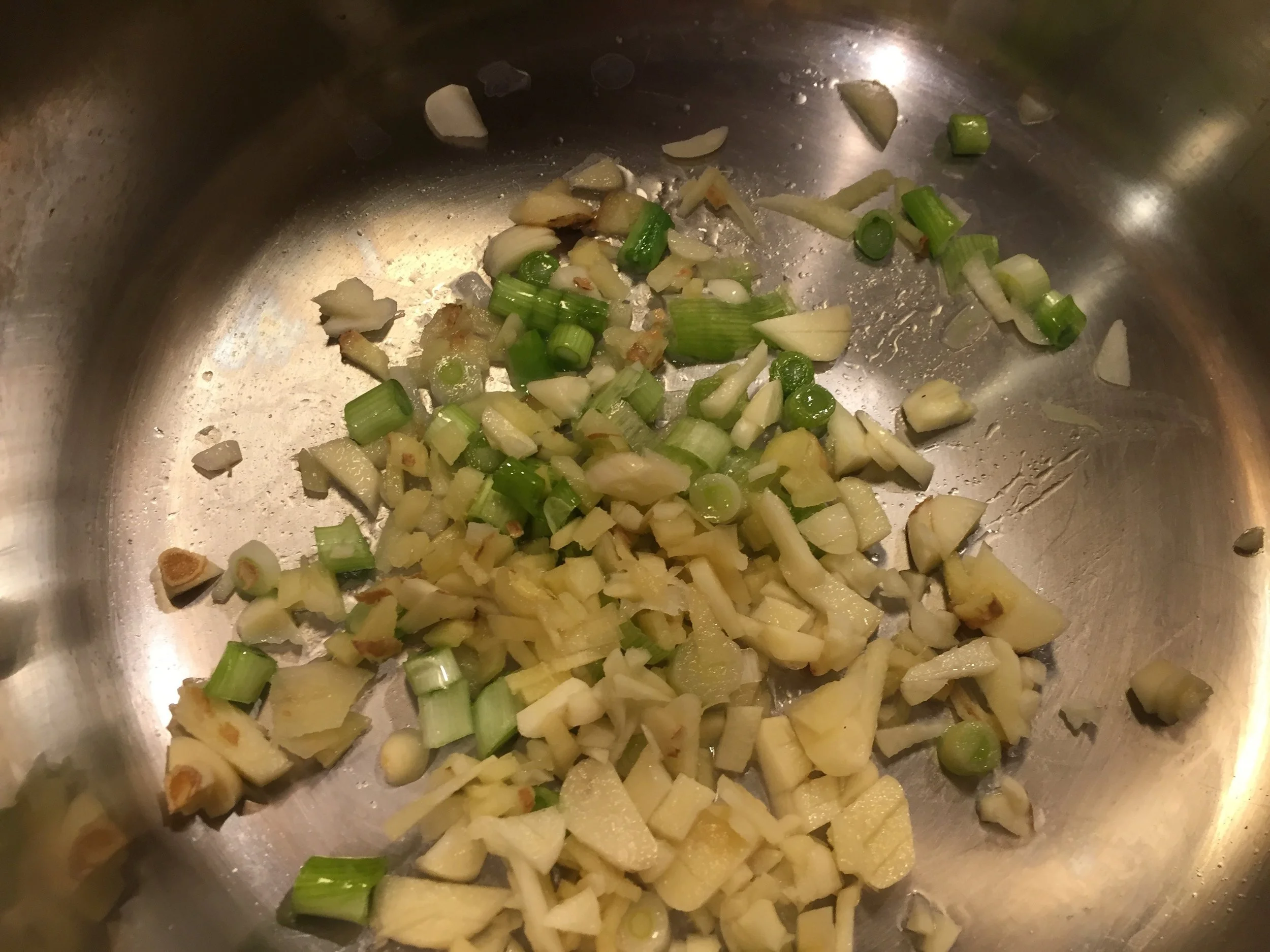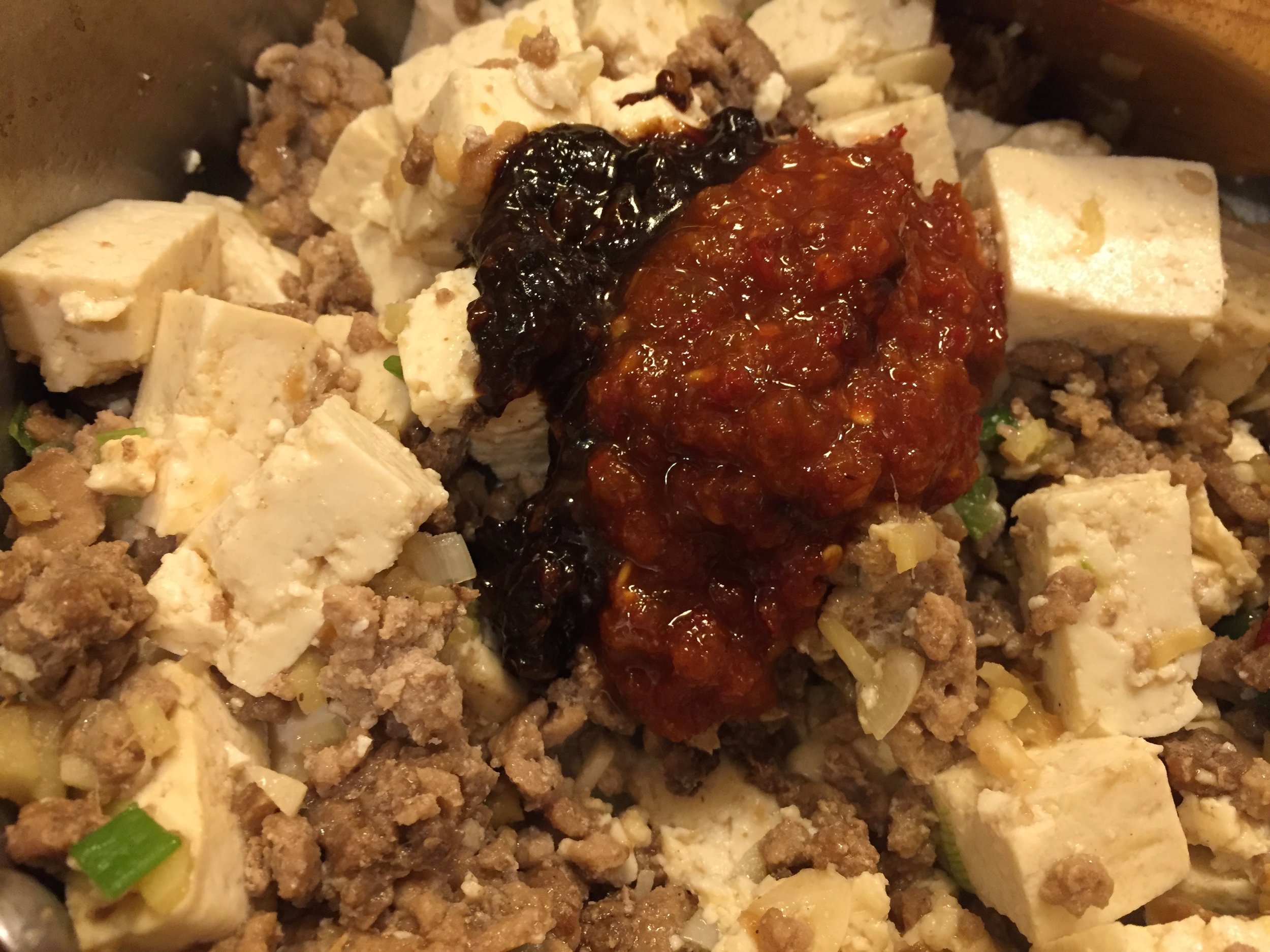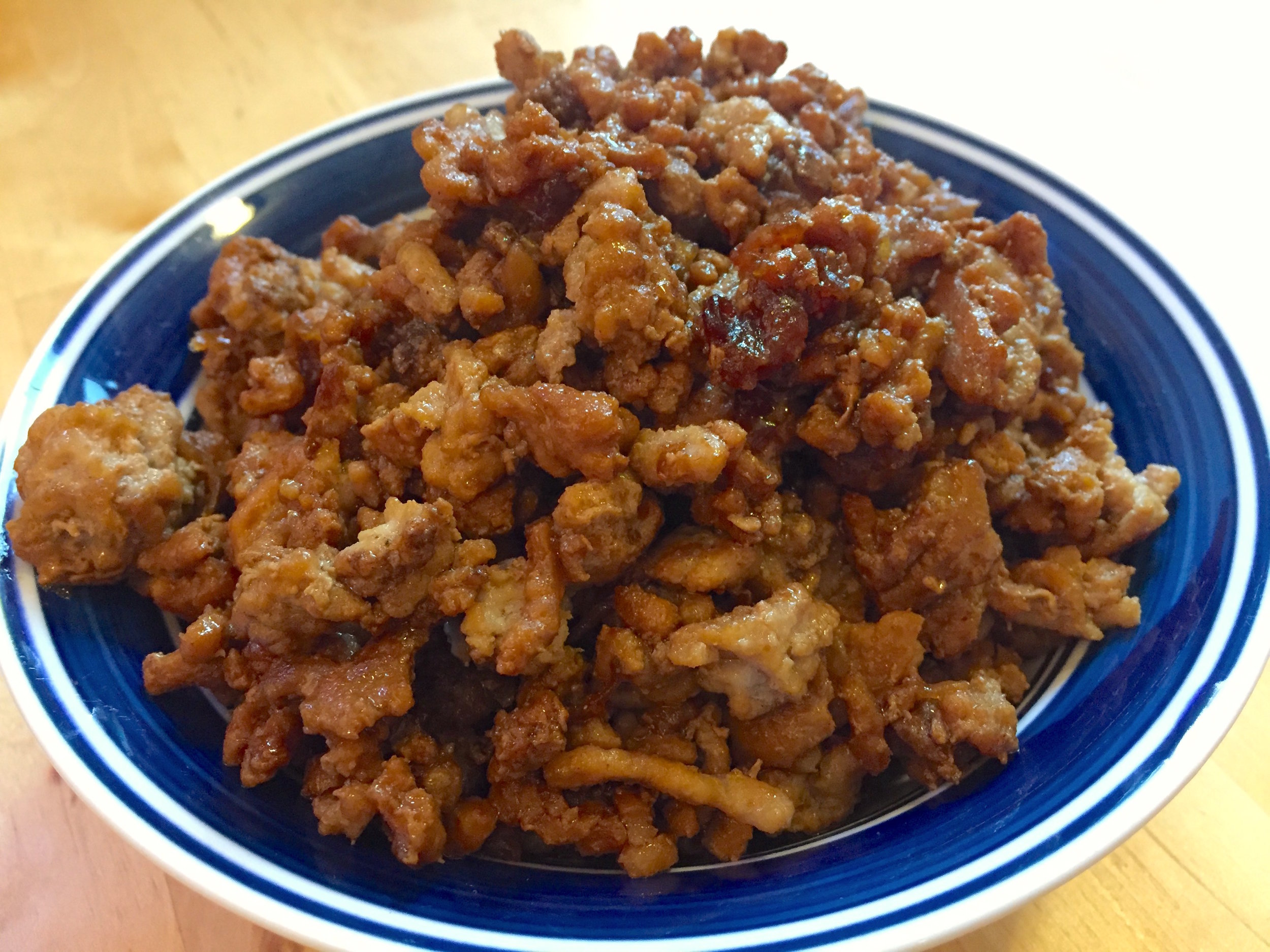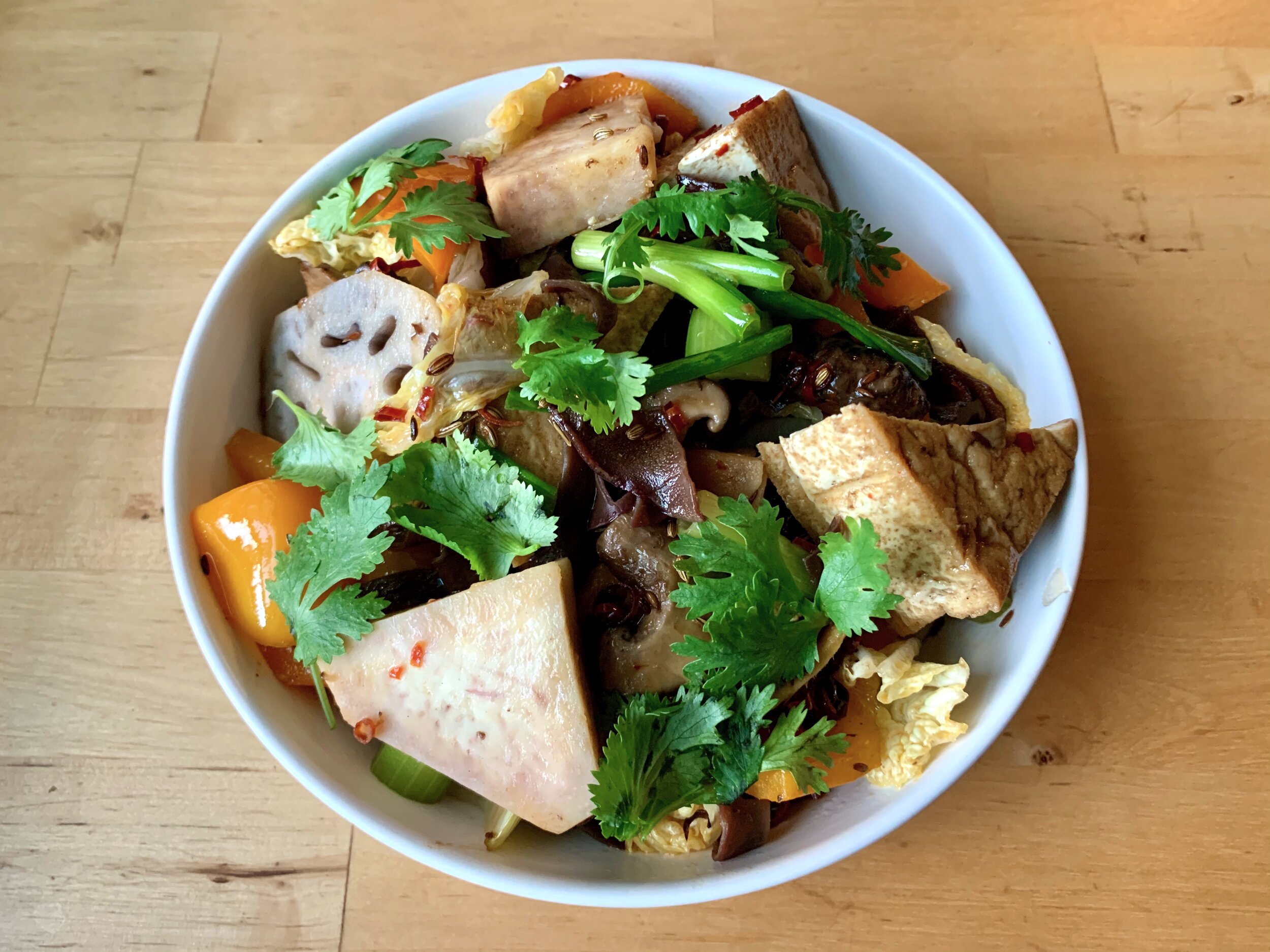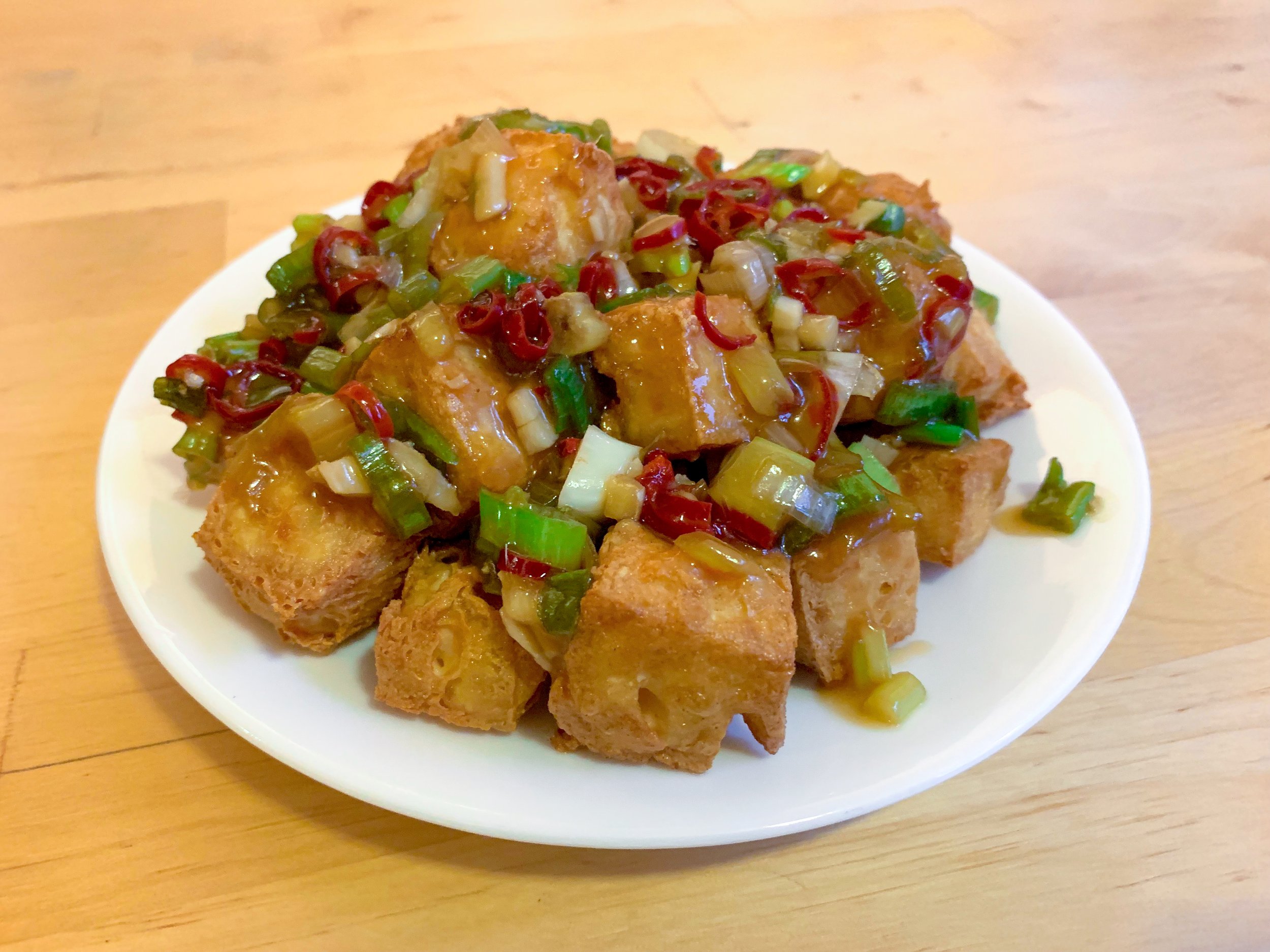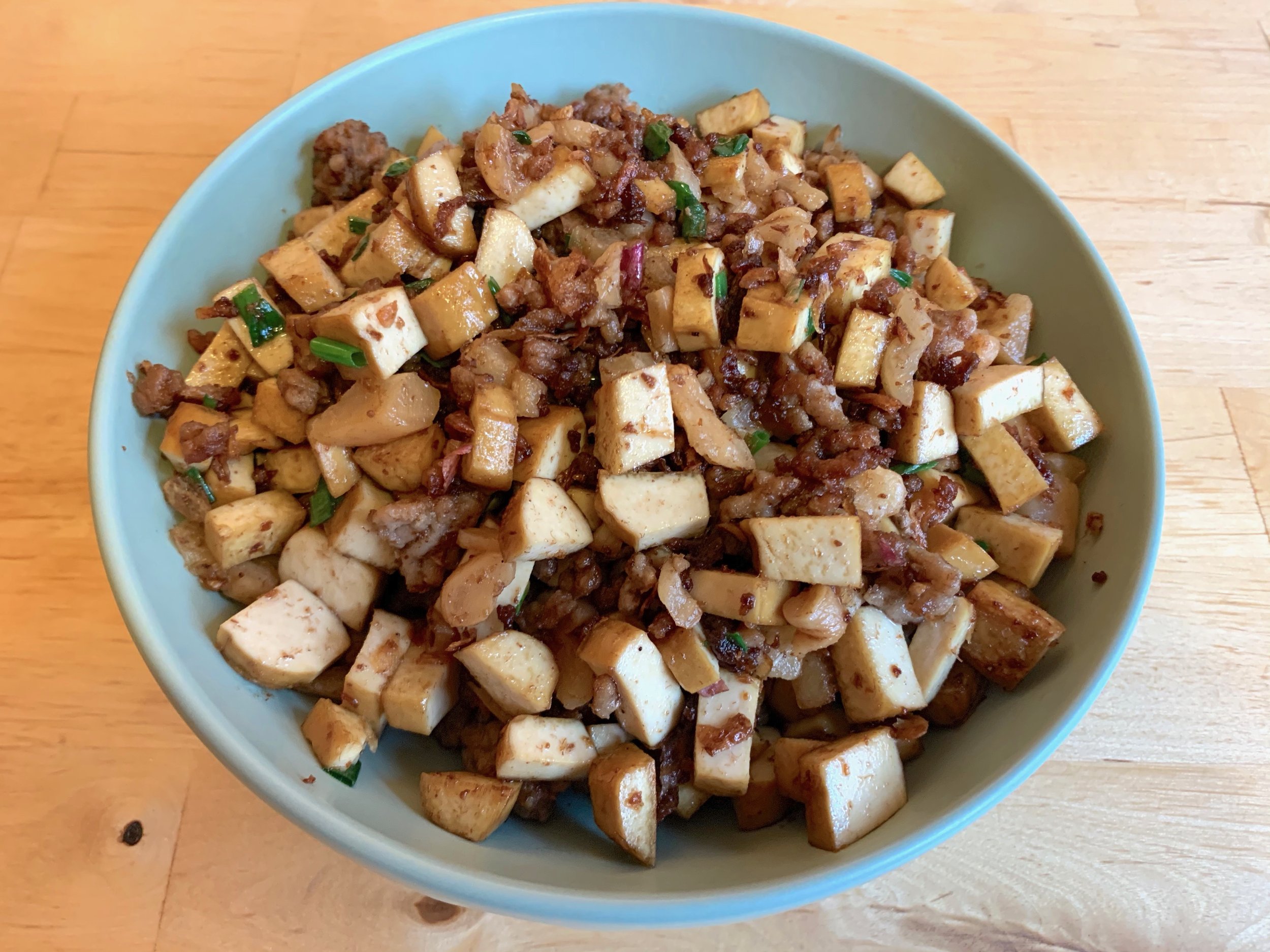Mapo Tofu
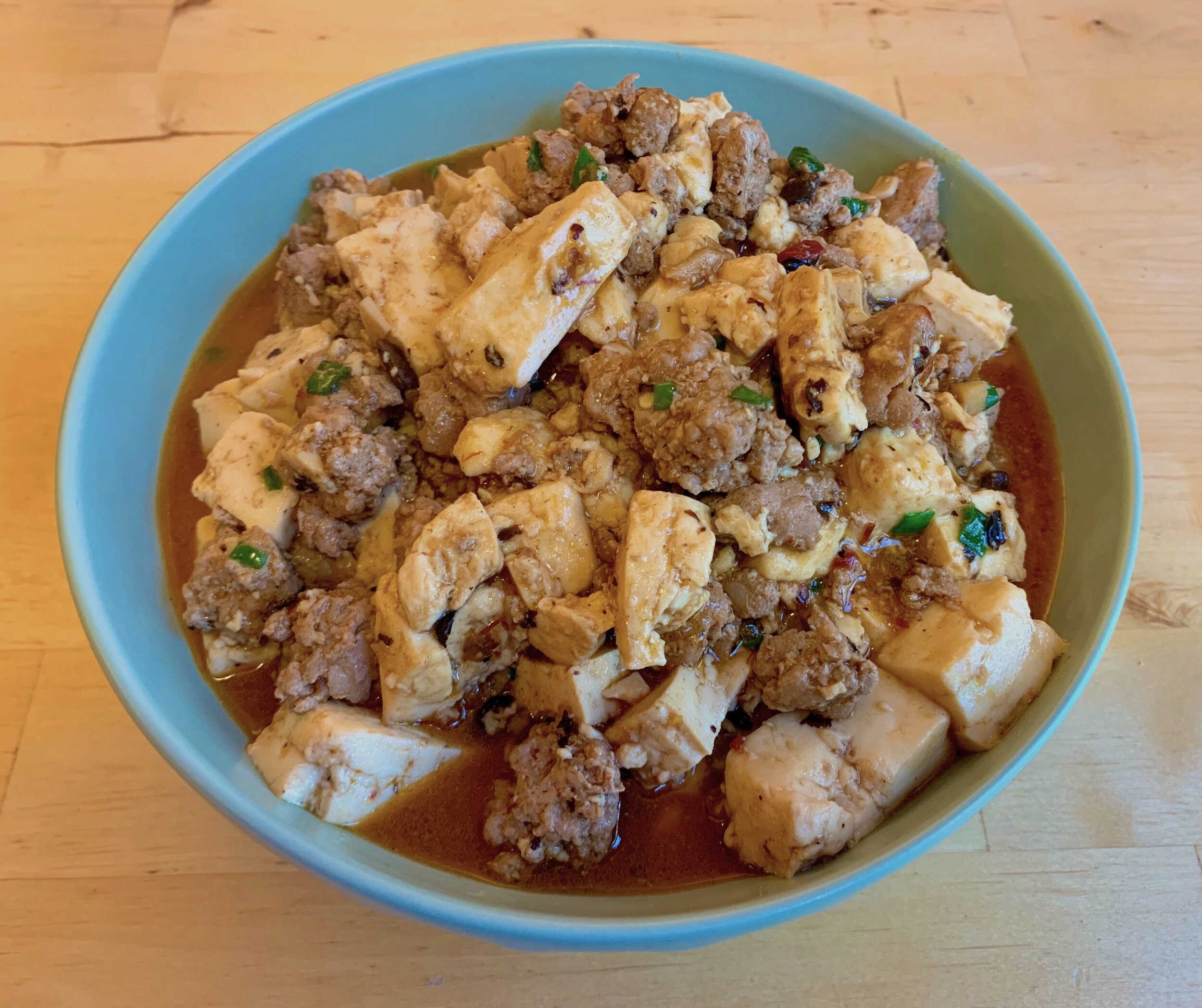
麻婆豆腐 (Ma Po Dou Fu)
Mapo tofu is a signature dish of Sichuan cuisine, an incredibly fragrant and spicy mixture of pork and tofu, seasoned with garlic, ginger, chili, scallions, doubanjiang, and Sichuan pepper. The name of the dish literally translates to “the pockmarked old woman’s tofu,” suggesting that mapo tofu originated in the kitchen of a pockmarked old woman in Chengdu, the capital of the Sichuan province. Known for its heat, mapo tofu has a complex spice profile, combining the warmth of ginger, the pungency of garlic, two sources of chili, and the numbing spice of Sichuan pepper. With the right ingredients, mapo tofu is an easy dish to make, and is best served fresh, though it also refrigerates and reheats well in the microwave.
Ingredients
8 oz (½ batch) Taiwanese minced pork, cooked
1 block medium tofu, cubed
1 tbsp doubanjiang
1 tbsp chili garlic sauce
6 cloves garlic, minced
1 inch ginger, minced
3 scallions, chopped
1 tbsp cornstarch
2 tsp chili oil
½ tsp Sichuan pepper (optional)
1 tsp vegetable oil
One of the primary flavors of mapo tofu is doubanjiang (豆瓣醬), a savory paste made from fermented soybeans.[1] Doubanjiang is packed full of umami, and lends tofu and vegetable dishes a deep, meaty flavor, despite being entirely vegetarian. Doubanjiang is available in both plain and spiced varieties. I prefer to use plain doubanjiang and add the spice separately, so I can adjust these two axes of flavor independently.
Part of the spice comes from chili garlic sauce, a common condiment in East Asian and Southeast Asian cuisines. Most kinds of Asian chili sauce will work in this recipe, as long as it is not a sweet chili sauce. We will also be using chili oil and (optionally) Sichuan pepper, which will be added towards the end of the cooking process.
We will start this dish by mincing our aromatics—garlic, ginger, and the whites of our scallions. While we’re chopping, we should also cut our tofu into bite-size cubes—either medium or soft tofu will work here. Heat a small amount of vegetable in a pot over medium heat. Then fry off the aromatics until fragrant, about 1 minute. Then add the pre-cooked pork and tofu, stirring gently until the ingredients are warmed through.
After 2-3 minutes, the pork will have released some of its juices and fat, and the tofu will likely have shed a fair amount of water. Add the doubanjiang and the chili garlic sauce to the pot and mix well. The objective is to coat the tofu pieces while the pot is still relatively dry, ensuring that the pieces of tofu soak up as much flavor as possible. Once the dish seems well mixed, add about ¼ cup of water to the pot (adjust this up or down depending on how much water the tofu has released—we are looking for approximately half a cup of liquid total in the pot).
Bring the pot to a boil, stirring and scraping the bottom of the pot to deglaze it. Cook at a boil for 3 minutes or so, allowing the many punchy flavors we’ve added to meld together. In the meantime, prepare a cornstarch slurry to thicken the sauce. Mix the cornstarch with cold water in a separate container until there are no lumps of cornstarch. We are not looking for a very thick or glossy sauce, we are just trying to add some body to the existing sauce. Pour the slurry into the pot and mix well, stirring until the desired consistency is reached.
Continue boiling for one minute longer, then stir in the chopped scallions and remove the pot from the heat. It is now time to add our final two spicy ingredients, neither of which require cooking. The first is chili oil, which reinforces the chili sauce already in the dish. The second is Sichuan pepper (花椒), which has a distinct numbing effect known as “ma la” (麻辣).[2][3]
Both of these ingredients should be added to taste, and can also be added at the table. Serve mapo tofu with rice.
Substitutions
Ground turkey, chicken, and beef all work in this dish. Due to the large amount of spice and heavy flavors, it is easy to cover up the differences between different types of meat. This dish can also easily be made vegetarian by simply omitting the pork. You can also add diced mushrooms in lieu of, or in addition to, the meat.
There is a great deal of variation between different brands of doubanjiang, so you may have to try a few to settle on a favorite. If you can’t find doubanjiang, Chinese black bean garlic sauces are a good substitute.
When it comes to the tofu, depending on the texture you want in the final product, feel free to use soft or silken tofu. Please don’t use firm tofu though—while firm tofu is easy to work with, it has a tough and grainy mouthfeel (Most tofu found in American supermarkets is of the firm variety, which has likely contributed to the negative characterization of tofu as an ingredient).[4] In general, unless you are frying, stir-frying, or making a filling, steer well clear of firm tofu.
The spice level of this recipe is tuned to be a bit less spicy than what you would find in Sichuan, but it is still very hot. If you want to turn down the spice, reduce the amount of chili oil and chili garlic sauce to your taste. If you want to turn up the spice, increase the amount of chili oil.
[1] Authentic Sichuan doubanjiang will contain broad beans and chili in addition to the soybeans, but this can be hard to find in most stores.
[2] The Chinese name for Sichuan pepper translates to “flower pepper.” Sichuan peppercorn is a citrus fruit which, despite its physical similarity, is not closely related to either the black pepper.
[3] The numbing effect of Sichuan pepper comes from the chemical hydroxy alpha sanshool. While structurally similar to capsaicin, the chemical which causes the sensation of heat in chili peppers, hydroxy alpha sanshool is known to activate different chemosensory neurons. The activation mechanisms and receptors for this chemical in chemosensory neurons are not yet well understood.
[4] The first recorded use of the word “tofu” in English is in a letter written in 1770 to Benjamin Franklin from British merchant James Flint, a member of the East India Company and one of the first Westerners to learn Chinese.
Recipe
Prep Time: 5 min Cook Time: 10 min Total Time: 15 min
Difficulty: 1/5
Heat Sources: 1 burner
Equipment: pot
Servings: 6
Ingredients
8 oz (½ batch) Taiwanese minced pork, cooked
1 block medium tofu, cubed
1 tbsp doubanjiang
1 tbsp chili garlic sauce
6 cloves garlic, minced
1 inch ginger, minced
3 scallions, chopped
1 tbsp cornstarch
2 tsp chili oil
½ tsp Sichuan pepper (optional)
1 tsp vegetable oil
Instructions
1. Heat the vegetable oil in a pot over medium heat. Once the oil comes to temperature, add the minced garlic, ginger, and the whites of the scallions, and fry until fragrant, about 1 minute.
2. Add the pork and tofu to the pot and stir gently until warmed through, about 2-3 minutes.
3. Add the doubanjiang and chili garlic sauce to the pot and mix well, coating the tofu pieces. Add ¼ cup of water and bring to a boil, stirring to deglaze. Cook for 3 minutes.
4. Prepare a cornstarch slurry by mixing the cornstarch with cold water, then pour the slurry into the pot and mix well to thicken.
5. Stir in the reserved chopped scallions, remove from heat, stir in the chili oil and Sichuan pepper, and serve.

